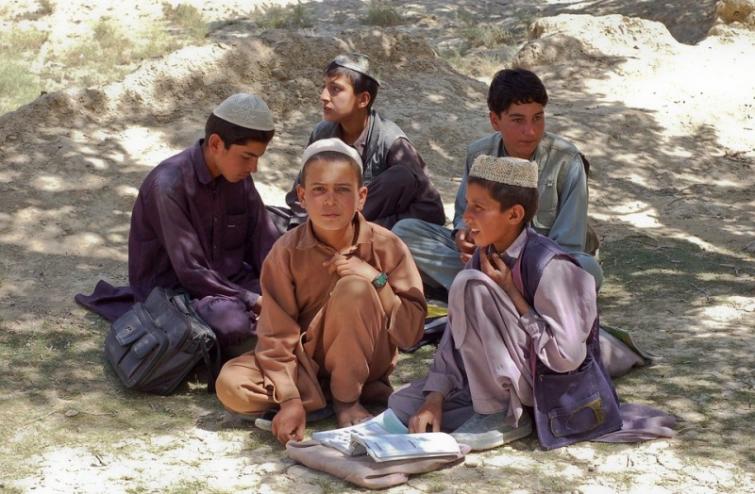
Afghanistan: Civilians continue to pay the price of conflict, says Amnesty International
Kabul: In 2019, Afghan civilians continued to pay the price of the ongoing conflict as justice proved elusive for the victims, Amnesty International said as the human rights organization released its annual report on events in the Asia-Pacific region.
Human Rights in Asia-Pacific: Review of 2019 published today by Amnesty International delivers the most comprehensive analysis of the state of human rights in the world’s largest continent.
Civilian casualties remained high throughout the year, with July marking the deadliest month on record and Afghanistan remaining the deadliest conflict in the world for children. Hundreds of thousands were internally displaced. Half a million Afghans were forcibly returned from neighbouring countries, and several thousand more from Europe, especially Turkey. Journalists and human rights defenders continued to face intimidation, threats, detention and even death for their work.
The armed conflict in Afghanistan is not winding down, it is widening, and the people who continue to pay the price are Afghan civilians
Omar Waraich
Justice continued to prove elusive for the victims, as the International Criminal Court refused to authorize an investigation into crimes under international law in the country and the authorities failed to investigate other serious human rights violations, including violence against women and attacks on human rights defenders.
“The armed conflict in Afghanistan is not winding down, it is widening, and the people who continue to pay the price are Afghan civilians. Throughout 2019, they were killed, injured, forcibly displaced and subject to other serious human rights violations by both the government and armed groups,” said Omar Waraich, Deputy South Asia Director at Amnesty International.
“In 2020, the world must shake off its indifference to this long-running conflict, and provide the people of Afghanistan with the protection they need and the justice they are owed.”
The world’s deadliest conflict for children
In the first nine months of 2019, more than 2,400 children were killed or injured in Afghanistan, making it the deadliest conflict in the world for children.
Over the same period, 2,563 people were killed in total and 5,676 injured. The period between July and September was the deadliest on record, with July being the single deadliest month.
Most of the attacks were carried out by armed groups, including the Taliban and the armed group calling itself the “Islamic State in Khorasan” (IS-K). In August, a suicide attack claimed by IS-K killed at least 63 people and wounded more than 200.
In the first six months of the year, pro-government and international forces were responsible for the highest number of civilian deaths, according to the United Nations Assistance Mission in Afghanistan. In December, a USA-operated drone strike killed five people, including a mother who had just given birth.
“There continues to be a shocking disregard for human life from all sides. There are armed groups who have carried out war crimes, and pro-government forces who are responsible for the deaths of the very people they are supposed to be protecting,” said Omar Waraich.
“The Afghan authorities and the international community have a responsibility to ensure that civilians are protected and that the perpetrators of attacks on them are held accountable.”
Human rights defenders under threat
Human rights defenders in Afghanistan faced threats, intimidation, detention and even death.
In September, the Taliban abducted and killed Abdul Samad Amir of the Afghanistan Independent Human Rights Commission. No one has been held accountable for his murder, which amounted to a war crime.
In December, Afghanistan’s National Directorate for Security, the country’s top intelligence agency, arbitrarily detained Musa Mahmudi and Ehsanullah Hamidi, two human rights defenders who had exposed a paedophile ring operating in Logar province.
“Faced with threats from both the state and non-state actors, Afghanistan’s human rights defenders are operating in some of the most hazardous conditions anywhere in the world. The Afghan government and the international community have long paid tribute their bravery, but they must now recognize their achievements, offer them effective support, and ensure that they are respected and protected,” said Omar Waraich.
Forced returns
In 2019, the world continued to turn its back on Afghans who had sought sanctuary from the continuing conflict. Neighbouring countries Iran and Pakistan forcibly returned half a million people last year, with more than 476,000 of them being sent back from Iran.
European countries continued to forcibly return Afghan asylum-seekers in the hundreds under various agreements made with the Afghan government, despite the grave risks that they would face upon their return to the country.
Turkey forcibly returned at least 19,000 Afghans as of September 2019 after keeping them in poor detention conditions.
“The conflict in Afghanistan makes it clear that no part of the country is safe for people to be returned to, and yet states continue to do so, in brazen violation of international law, forcing people into harm’s way to face the very dangers they were forced to flee in the first place,” said Omar Waraich.
Support Our Journalism
We cannot do without you.. your contribution supports unbiased journalism
IBNS is not driven by any ism- not wokeism, not racism, not skewed secularism, not hyper right-wing or left liberal ideals, nor by any hardline religious beliefs or hyper nationalism. We want to serve you good old objective news, as they are. We do not judge or preach. We let people decide for themselves. We only try to present factual and well-sourced news.







